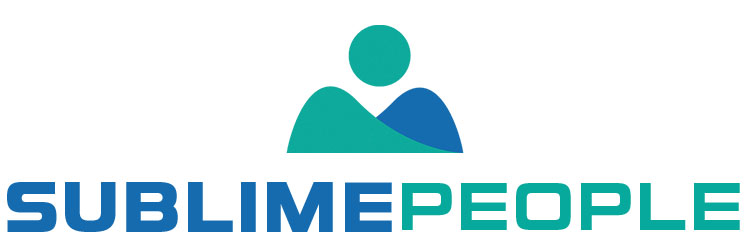We have all done it – you take a deep breath before speaking in public or when faced with a difficult situation. We do it without thinking and often don’t realize that we are doing it until someone points out our behavior. In this article, we discuss what breathing is, how it affects your body, and most importantly, how you can learn to breathe properly.
In this Article:
What is breathing?
It is an automatic function of the body to get oxygen into the lungs and take out carbon dioxide that builds up.
Inhaling
This happens when the diaphragm contracts and expands your lungs. When oxygen enters your bloodstream, it causes an emotional response in order to regulate mood and inhibit neurotransmitters.
Exhaling
It happens when the diaphragm releases and creates a vacuum in the lungs. When this occurs, the carbon dioxide exits your body. When you exhale, you release tension and control neurotransmitters.
How does it affect your body?
The way you breathe affects your whole body. When you do it wrong, it may also affect your body in a negative way.
People who have difficulty respiring may be at a higher risk of:
- Chest pain and heart problems.
- Asthma or other lung problems.
- Anxiety, depression, and insomnia.
There are many times in the day when you need to take deep breaths such as:
- When you feel stressed and want to relax.
- Before and after you exercise.
- When you feel like crying or are upset. It can help you get rid of the negative emotions you have by releasing them as carbon dioxide when breathing out.
- While eating, if you eat fast and swallow a lot of air it may lead to stomach discomfort.
- Before important events or meetings. Taking deep breaths will help you calm down and relax so that your performance will be better.
Chest breathing vs belly breathing
When you breathe can do it through your chest or through your belly. Usually, people wonder which is the best way. Below we discuss the benefits of both alternatives:
Chest breathing
It occurs when you breathe in through your chest and out through your chest. This is a common way for people to breathe, but it is harder to get oxygen since your lungs are compressed. Your upper chest expands and constricts when you breathe in and out.
Belly breathing brings shallow breaths. Shallow breaths don’t let your body get the oxygen it needs.
Belly breathing
In this case, you breathe in through your diaphragm expanding your rib cage and exhaling through the same place. With belly breaths, you can breathe deeper into your lungs. It also aids in the improvement of your voice and posture.
Deep breathing exercises are often done by using the belly. It happens when you breathe slower and deeper into your lungs. This increases the flow of oxygen and stimulates your mind and body.
Nose breathing vs mouth breathing
Nose breathing is the process in which you move air into and from your lungs through your nose. On the contrary, mouth breathing is when you do the same process described before but using your mouth. Below we discuss both of them:
Nose breathing
Whenever possible, breathe through your nose because this is the best way to incorporate air. When you inhale through your nose, you need to keep your mouth closed. Your nose has hairs and a mucus lining that filters out impurities from the air you breathe in. Inhaling through your nose also slows down the rate of breathing. Below we discuss the effects of using your nose to breathe:
- Filter air coming in: when you breathe through your nose, it filters out impurities and pollen before the air reaches your lungs. This reduces exposure to foreign agents and is especially useful during hay fever season or if you suffer from allergies or hay fever. This also helps your immune system.
- Humidify and acclimate the inhaled air: when you breathe in through your nose, it warms up and humidifies the air that comes into your body. This means that the temperature of the inhaled air is closer to body temperature and more moisturized, which makes it easier for your lungs to absorb oxygen.
- Slows down breathing: when you breathe through your nose, it reduces the rate of breathing. This helps you control your breath and pace during relaxation. Breathing through your nose makes you feel relaxed. It helps manage anxiety during stressful situations.
- Improves lung capacity: when you breathe through your nose, it pushes out all the junk air and makes room for more oxygen. This improves lung capacity and also reduces respiratory problems such as asthma, bronchitis, and pneumonia.
- Widens the blood vessels: During nasal respiration, your nose releases nitric oxide. Nitric oxide aids in the widening of blood vessels. This may aid in the circulation of oxygen throughout your body.
Extra benefit when sleeping
- Lower your risk of snoring and sleep apnea: By using your nose to breathe you reduce the probability to get sleep apnea, which makes you stop breathing in your sleep. Snoring occurs when you breathe through the mouth instead of the nose. Learning how to breathe through your nose can reduce sleep apnea and snore.
Your nose was specifically made to breathe. It has an intricate system of air passages and chambers for warming, filtering, and humidifying the air before it reaches your lungs. Breathing through your mouth bypasses these structures.
Mouth breathing
It is a common way to breathe. Usually, it is associated with mouth snoring and sleep apnea. Inhaling and exhaling through your mouth cause dry mouth, bad breath, and sore throat.
Below we discuss its effects:
- Increases mouth odor: If you breathe through your mouse you increase mouth odor which is associated with dry mouth and soaring through.
- Headaches and neck pain: Mouth breathing can also make you feel lightheaded. It can even be a cause of headaches. Neck pains can sometimes be connected with postures that tense your neck to maintain your mouth open while inhaling and exhaling through your mouth.
- Relaxes stomach muscles: It can relax stomach muscles and may lead to a hunched-over posture.
- Decreased oxygen in the blood: It can decrease the flow of oxygen in the blood by up to 30 percent when done for long periods of time. Low oxygen levels in your body can cause dizziness, shortness of breath, fatigue, brain fog, and poor concentration.
- Increase oxygen intake: Because your mouth has a bigger hole than your nose, it is easier to intake more oxygen.
- Toxins entering the body: If you breathe through your mouth you let a lot more toxins enter your body as opposed to when you breathe through your nose.
Breathing through your mouth is often done out of habit and unfortunately, it can be difficult to change. However, with conscious effort, focus, and relaxation of the muscles surrounding your mouth people can change this habit.
Stress and breathing
Shallow breathing is a common stress response. If you find yourself in a stressful situation, it can be difficult to inhale and exhale slowly, which is needed to get proper oxygen to your nervous system.
When you want to reduce stress an option is to use breath control. Breath control is the ability to slow down your breath rate. Controlling your breathing patterns will help you focus on your body, which can help you relax. Next to this, you will be able to get the oxygen needed for your brain. When you force yourself to get a relaxed breathing pattern, it appears to soothe the nervous system.
When you are upset, stressed out, or having trouble sleeping, try breathing techniques for relaxation.
Benefits of breathing exercises
Controlled breathing can cause health benefits such as:
- Lowers blood pressure
- Increased feelings of well-being and stress management
- Balances oxygen and carbon dioxide levels
- Improves immune system
- Decreases heart rate
- Reduces stress and stress hormones in the blood
- Reduces lactic acid build-up in the body
- Athletic performance
These exercises are almost a must to learn when you want to get in shape or want to have stress relief. People who like to dance, do yoga, or martial arts should learn how to breathe properly. These techniques are also used in meditation because they enhance your mind and body performance and make you feel stressed out less. Most of the exercises work with diaphragmatic breathing (People also call it deep breathing).
Deep breathing techniques
Deep breathing is when you inhale slowly and exhale slowly. When you breathe deeply, your body gets more air in your lungs. It is also called abdominal breathing.
Inhaling for four seconds and exhaling for four seconds during one minute is a simple exercise. Other exercises that we can do to relax such are:
- Pursed lip breathing
- Deep Breathing Technique
- Progressive muscle relaxation
- Breath focus
- Coherent breathing
- Modified Lion’s Breath
- Alternate nostril breathing
- Sitali breath
- Humming bee breath
Deep breathing techniques will help you learn how to regulate your breathing pattern and how to improve your sense of autonomy. It will be easier for you to shift your mood, manage stress, and get motivated.
A word from Sublime People
In this article, we discussed the types of breathing. Belly breathing is the most optimal type of breathing as it keeps your body relaxed and increases your oxygen intake. It is also best to breathe through your nose as it filters out any harmful particles.
Next to this, these exercises can be extremely beneficial for your health. People who practice relaxation techniques for breathing have less anxiety, stress, and negative thoughts. If you would like to try a deep breathing technique find a place to lie or sit comfortably and try breathing in and out for four seconds. Try it now, and see what happens!
You can also leave us a comment with your experience!




